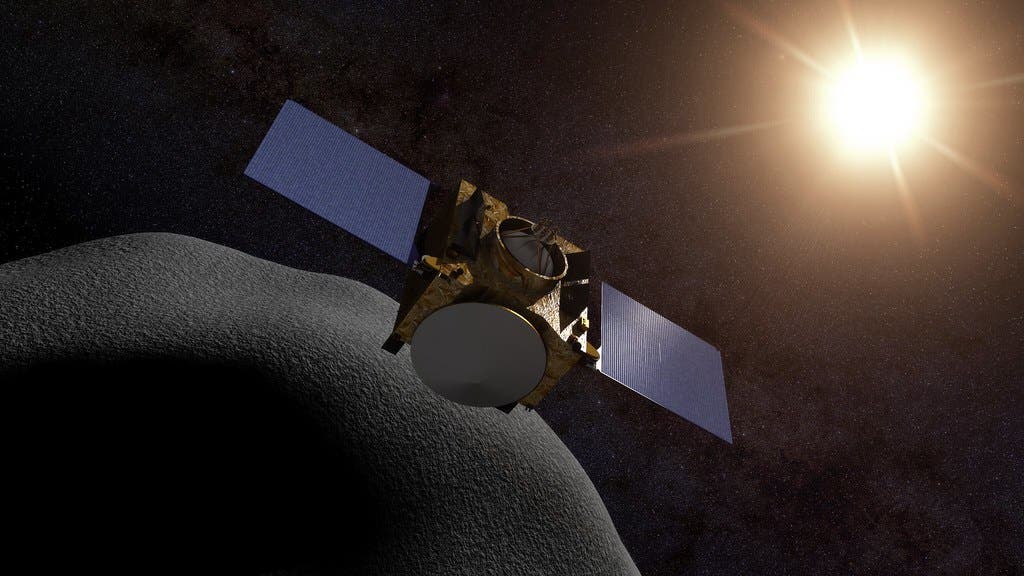NASA’s mission to land an unmanned craft on asteroid Bennu was a resounding success, the agency reported earlier today.

The OSIRIS-REx spacecraft successfully completed its “touch-and-go” landing on Tuesday evening, with the confirmation message reaching ground control some 18 minutes after the actual event (due to the distances involved). All in all, the craft took the samples it set out to obtain, although we don’t clearly know how much material the probe recovered right away. We’ll have a rough idea in a few days, and we’ll know for sure after it makes the 200 million-mile trek back home, sometime in 2023.
Unmanned success
“Transcendental. I can’t believe we actually pulled this off,” said Dante Lauretta, the mission’s principal investigator, during NASA’s live broadcast of the operation. “The spacecraft did everything it was supposed to do.”
Although it only landed on the asteroid for a few seconds, the team is confident that the probe managed to collect the samples we require. The confirmation signal reached Earth at 6:11 pm ET. The team is now waiting to see if the collected sample is large enough — they were aiming for at least 2.1 ounces (60 grams) of material.
But why would we go to such lengths (pun intended) to get a handful of space dirt? Well, for starters, there is a real possibility that Bennu will crash into Earth sometime in the next century. It’s also been frozen in time from the early days of the Universe, so studying its nature and chemical make-up can help us gain a better idea of how planets formed, and maybe even information about the origins of life.
On a more practical side, Bennu will serve as a case study for future space travel. Such endeavors will need to stop at and mine asteroids for vital resources such as water, which can be split into oxygen to fuel the crew and hydrogen to fuel the engines. Bennu could help us better understand what asteroids to look out for in the future.
“Bennu is one of the most potentially hazardous asteroids, with a non-negligible chance of impacting the Earth at some point in the 22nd century,” Lauretta said in September.
“Part of our science investigation is about understanding its orbital trajectory, refining the impact probability, and documenting its physical and chemical properties so that future generations can develop an impact-mitigation mission, if that’s necessary.”
If all ends well, OSIRIS-REx will be the first-ever mission to return samples of rock from the birth of the solar system, giving researchers the chance to ask (and answer, hopefully) completely new questions about where the Earth and its neighbors come from.
You can watch NASA’s live broadcast of the craft landing on Benuu here:


